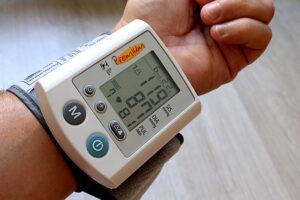 A group of scientists from China has designed a very sensitive tiny fiber optic sensor for the measurement of the slightest pressure changes. Such FBG pressure sensors are suitable for medical applications. Herewith, they do not have numerous disadvantages of silica-based optical fibers.
A group of scientists from China has designed a very sensitive tiny fiber optic sensor for the measurement of the slightest pressure changes. Such FBG pressure sensors are suitable for medical applications. Herewith, they do not have numerous disadvantages of silica-based optical fibers.
According to scientists, such a fiber sensor is extremely sensitive, and it allows for measuring lung pressure even while breathing. The thing is that pressure changes in the lungs are very small and difficult to be detected. The operating principle of FBG pressure sensors is based on a fiber Bragg grating (FBG) inscribed into an optical fiber.
It should be noted that the optical fiber used is made of a new polymer. The pressure sensor detects the slightest pressure changes of 2 kilopascals. The biocompatibility of these fiber optic sensors makes them suitable for medical applications. Additionally, the fiber sensors are chemically inert, herewith they are not sensitive to moisture.
The scientists plan to use FBG pressure sensors to control different parameters that contain pressure, temperature, and strain. Moreover, numerous modern fiber sensors use FBG technology, “ tiny periodic microstructures that can be inscribed onto a fiber.”
FBG sensors made of conventional silica-based fibers have several disadvantages for medicine. They are not convenient for long-term use in the body because these optical fibers are relatively hard and very frangible. Moreover, most FBG sensors made of silica perform limited sensitivity to the slightest pressure changes.
Compared to silica sensors, there are polymer fiber optic sensors. However, they absorb water. This is the main reason why scientists create advanced polymer optical fiber to solve the current problems. Novel FBG pressure sensors can be applied in aqueous environments.
Also, such material offers a higher light shift in response to a pressure change. The production of these FBG sensors becomes easier because it doesn’t require the use of dopants. Thus, scientists produce optical fibers with good reproducibility.
The FBG pressure sensors have been already tested by comparing their performance with the standard polymer counterpart. Herewith, novel fiber sensors provide a linear, repeatable response. They can be employed for low-pressure measurement up to 50 kilopascals above or below atmospheric pressure with a resolution of 2.0 kilopascals.
Finally, these FBG sensors demonstrate higher sensitivity (80% higher than standard polymer-based sensors). Their promising applications include the operation not only in medical and high-altitude environments but also in gaseous containers.
Optromix is a fast-growing vendor of fiber Bragg grating (FBG) product line such as fiber Bragg grating sensors, for example, fbg strain sensors, FBG interrogators and multiplexers, Distributed Acoustic Sensing (DAS) systems, Distributed Temperature Sensing (DTS) systems. The company creates and supplies a broad variety of fiber optic solutions for monitoring worldwide. If you are interested in structural health monitoring systems and want to learn more, please contact us at info@optromix.com

